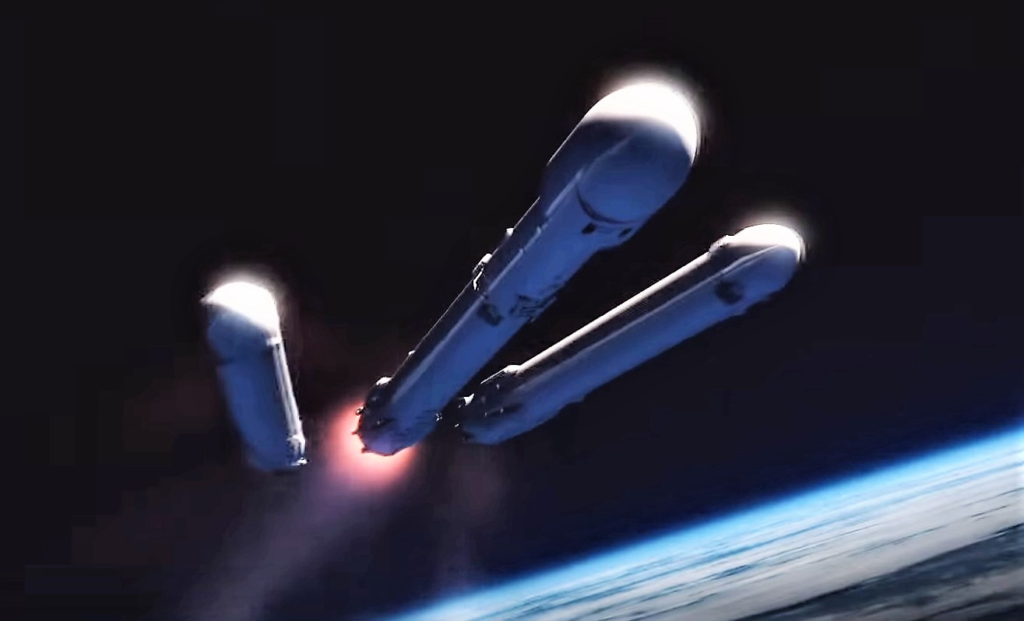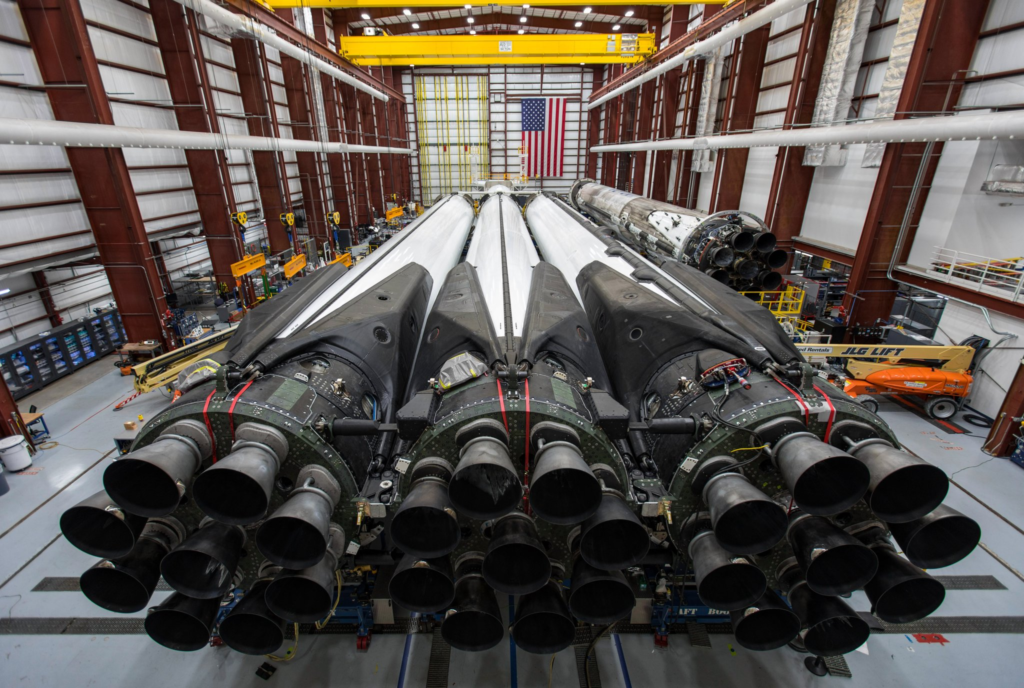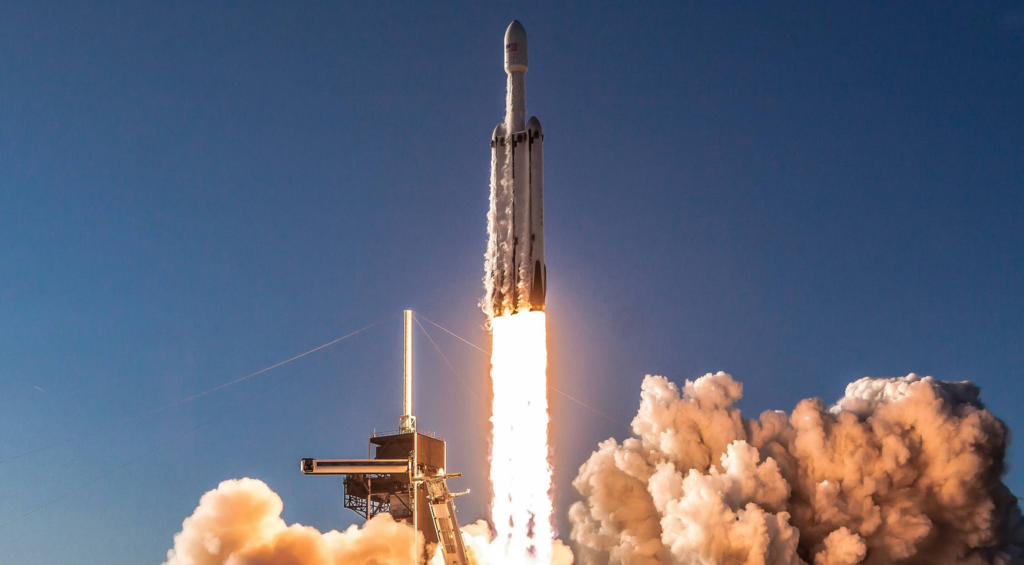
SpaceX’s Falcon Heavy Has A Very Busy Schedule Ahead Of It
It has been years since the last time we watched a Falcon Heavy lift off. Specifically, the most recent launch happened in June of 2019 when it successfully deployed multiple satellites and managed to land two of the three boosters. Unfortunately, since then, we have not seen any action from the heavy lift launch vehicle and instead just the Falcon 9.
While there are a variety of reasons for this, what’s important is the fact that this is set to change only months from now. As of right now, Falcon Heavy has multiple launches scheduled for the next three months of 2022. While some of these are subject to change, we are still likely to watch this rocket take off again by the end of the year. Not to mention additional missions scheduled for early 2023 and beyond.
These launches include a few firsts such as attempting to land the two side boosters simultaneously on two drone ships at sea, the heaviest satellite ever, and more. All of which is possible thanks to the innovative and extremely ambitious design of the Falcon Heavy. Here I will go more in-depth into some of the upcoming Falcon Heavy missions, why it hasn’t flown in such a long time, the launch vehicle itself, and more.
Upcoming Missions

Next month in October the Falcon Heavy still is scheduled for its first launch in a few years. The mission is for the U.S. Space Force and the payloads are the USSF-44 satellites. It also marks the first classified flight of Falcon Heavy. The contract was awarded to SpaceX for a price of under 30% of that of a typical Delta IV Heavy launch at around $130 million. The payload includes two separate satellites and at least two additional rideshare payloads and will weigh roughly 3.7 t (8,200 lb) at launch. One aspect of this mission that is unique and exciting, has to do with the launch trajectory and recovery of the boosters. Specifically, the satellites will be launched in a direct geosynchronous orbit, necessitating for the first time a planned partially expendable launch, where SpaceX deliberately expends the center core which lacks grid fins and landing gear needed for a landing, while the two side-boosters will be targeting a simultaneous recovering on drone ships A Shortfall of Gravitas and Just Read The Instructions. It was originally scheduled for Q1 2022, but it has been delayed due to payload issues.
Soon after in November, Falcon Heavy has another scheduled launch this time with Viasat. Falcon Heavy was originally slated to launch the Viasat-2 satellite, but due to delays, an Ariane 5 launch vehicle was used instead. Viasat maintained the launch option and will launch its next satellite using the Falcon Heavy. In this case, the upper stage of Falcon Heavy will deploy the satellite into a near-geosynchronous orbit that will include a coasting stage several hours long between burns. In addition, just one month later this year in December, the heavy lift launch vehicle has a third launch scheduled. This time another launch with the U.S. Space Force. Expected to be the first SpaceX launch of the Phase 2 USAF contract, likely to be on a Falcon Heavy, and likely requiring a vertical integration building and an increased fairing size. It will use three new boosters, with the center core in an expendable configuration (no grid fins or landing gear), while the two side-boosters will be targeting a simultaneous landing on drone ships, JRTI and ASOG as the mission requirements are similar as of USSF-44 mission. All of which comes in addition to a host of other Falcon Heavy missions planned throughout 2023 including a launch of the heaviest satellite at 9.2 tons. In May this year, Echostar announced the delay of the Jupiter 3 satellite. Jupiter-3 will deliver a maximum bandwidth of 500 gigabits per second, and it will cover North and South America. What’s most interesting is its weight which could be a record if successful.
While some of these mission dates are in the air due to a variety of reasons, with so many opportunities in just the next few months, it seems very likely we could see Falcon Heavy lift off not long from now. The rocket has only had three launches throughout history and its return is just around the corner. In early 2018 we watched the Falcon Heavy lift off for the first time and deploy a Tesla Roadster into space apart of a demonstration mission. The mission was considered a massive success, with both side boosters landing successfully and the payload deployed. Unfortunately, the center booster struck the ocean and was destroyed after two of its engines failed to relight during the landing burn. The next launch was in April of 2019 and was successful as well. They launched a heavy communications satellite and managed to land all three boosters before the center core fell over during transport and was lost. Finally the most recent launch in June 2019. The mission supported the U.S. Air Force National Security Space Launch certification process for the Falcon Heavy. The original contract price was US$165 million, which was later reduced, in big part due to the military’s agreement to fly the mission with reused side boosters. Following a similar theme of previous missions, the payloads were delivered successfully along with the two side boosters landing. However, the core booster once again was lost. This brings us up to date regarding Falcon Heavy’s past and upcoming launches.
Falcon Heavy Overview

Now that we know more about the rocket’s launch schedule and what to expect in the coming months, we can take a closer look at why its been years since the rocket launched, and what makes it so special. While there are a variety of reasons for the lack of Falcon Heavy launches despite early success, one of the main ones has to do with the Falcon 9. At the time of Falcon Heavy development and early use, SpaceX was still working on the Falcon 9 and improving the launch system. The Falcon 9 performance ended up being very significant to the point where a good amount of launches and payloads expected to be launched by Falcon Heavy were moved to the Falcon 9. This comes in addition to the fact that the Falcon Heavy sits within a slightly niche market and mainly is effective for very large single satellites and extended orbit capabilities.
Currently, Falcon Heavy is still the most powerful operational rocket in the world by a factor of two. With the ability to lift into orbit nearly 64 metric tons (141,000 lb) Falcon Heavy can lift more than twice the payload of the next closest operational vehicle, the Delta IV Heavy. Falcon Heavy’s first-stage comprises three Falcon 9 first stages with enhancements provided to strengthen the cores. Furthermore, Falcon Heavy utilizes the same second stage and same payload fairing as flown on Falcon 9, fully benefitting from the flight heritage provided by Falcon 9 flights. This commonality has also minimized infrastructure unique to the vehicle. It’s also partially why so many missions were able to move from Falcon Heavy to Falcon 9. Falcon Heavy’s first stage incorporates 27 Merlin engines across three aluminum-lithium alloy rocket cores containing liquid oxygen and rocket-grade kerosene (RP-1) propellant. Falcon Heavy generates more than 5 million pounds of thrust at liftoff.
In terms of design for Falcon Heavy, the fundamental purpose of the side cores is to apply axial force to the center core during ascent and increase the impulse delivered to second stage before stage separation. The timing of the shutdown for the Falcon Heavy side cores can be tailored for each mission to ensure that the proper impulse is delivered. Each side core is structurally connected to the center core at forward and aft locations. Two pneumatic pusher separation mechanisms connect the forward ends of each side core to the center core, fastening the top of the LOX tank in the center core to the side cores. They maintain the connection during ascent and then actively jettison the side cores following side core shutdown. Two identical pusher separation mechanisms connect the aft ends of each side core to the center core and are used to laterally force the base of the side cores from the center core following the side core shut down. Between the first and second stages, you have the interstage. The interstage is a composite structure that connects the center core on the first stage and second stages and holds the release and separation system. Falcon Heavy is equipped with 12 hypersonic grid fins, four on each booster, positioned at the base of the interstage or nosecone which orients by moving the center of pressure during reentry. Lastly, you have the second stage. Falcon Heavy draws upon Falcon 9’s proven design, which minimizes stage separation events and maximizes reliability. The second-stage Merlin Vacuum Engine delivers the rocket’s payload to orbit after the main engines cut off and the first-stage cores separate. All of which works together to provide a reliable and extremely powerful launch system.
Conclusion
It has been years since the last time we watched Falcon Heavy lift off. This has been for a variety of reasons including the success of Falcon 9, lack of large satellites, and more. Thankfully, however, this is set to change in a very big way in the coming months. Not to mention even more missions scheduled for next year. We will have to wait and see how it progresses and the impact it has on the space industry.
